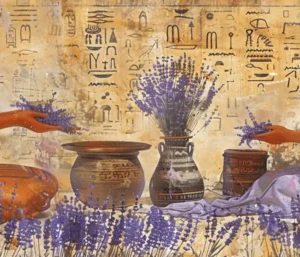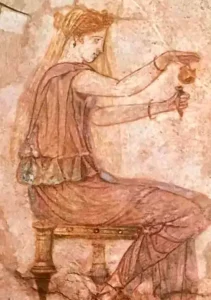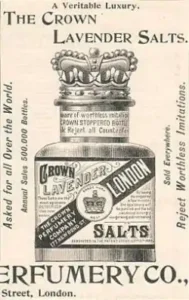Your cart is currently empty!
The History of Lavender: A Timeless Herb
Lavender, with its stunning purple blooms and enchanting fragrance, has a rich and fascinating history that spans thousands of years. This beloved herb has been used for a multitude of purposes, from culinary delights to medicinal remedies, and its legacy continues to thrive today. Let’s explore the intriguing history of lavender, tracing its journey from ancient civilizations to modern-day wellness.
Ancient Beginnings

The history of lavender dates back to ancient times, with its origins believed to be in the Mediterranean region. Archaeological evidence suggests that lavender was cultivated as far back as 2500 BC in ancient Egypt, where it was used for its fragrant properties in perfumes and as an essential ingredient in embalming rituals. Lavender was also discovered in the tombs of pharaohs, highlighting its importance in Egyptian culture.
Lavender in Ancient Rome

Lavender’s popularity spread through the Roman Empire, where it was cherished not only for its scent but also for its versatility. Romans added lavender to their baths for relaxation and hygiene, giving rise to its name, which is derived from the Latin word lavare, meaning “to wash.” It was also used in cooking and as a natural insect repellent, showcasing its multifaceted uses in daily life.
Medieval and Renaissance Uses

During the Middle Ages, lavender became a staple in European gardens, prized for its aromatic qualities and medicinal benefits. Monks and herbalists cultivated lavender for its ability to ward off pests, treat ailments, and promote relaxation. Its antiseptic properties made it valuable for treating wounds and infections.
In the Renaissance, lavender experienced a resurgence in popularity. It was commonly used in sachets, potpourri, and perfumes, and became synonymous with cleanliness and fresh living spaces. Lavender was often included in wedding bouquets, symbolizing love and devotion.
Lavender in Traditional Medicine

As herbal medicine evolved, so did the uses of lavender. In the 17th and 18th centuries, it was widely used in herbal remedies for a range of ailments, from anxiety and insomnia to digestive issues. The famous herbalist Nicholas Culpeper included lavender in his works, advocating its benefits for both physical and mental health.
The Modern Era

In the 19th century, lavender became integral to the burgeoning perfume industry. Its distinctive fragrance was sought after by perfumers, and lavender fields began to flourish in regions like Provence, France. The cultivation of lavender transformed local economies, and the annual lavender harvest became a celebrated event.
The 20th century saw the rise of aromatherapy, which further popularized lavender for its calming and therapeutic properties. Today, lavender essential oil is a staple in wellness practices, used in everything from aromatherapy and skincare to culinary applications.
Cultural Significance
Throughout history, lavender has also held cultural significance in various societies. It has been associated with purity, tranquility, and healing. In some cultures, lavender is believed to bring good luck and protect against evil spirits. Its enchanting scent and vibrant color continue to inspire art, literature, and folklore.
Conclusion
The history of lavender is a testament to its enduring appeal and versatility. From ancient Egypt to modern aromatherapy, this remarkable herb has captured the hearts and minds of people around the world. Whether used for relaxation, healing, or as a fragrant addition to our lives, lavender’s legacy is firmly rooted in tradition, making it a timeless herb that continues to thrive. Embrace the history of lavender and explore the many ways it can enhance your life today!
